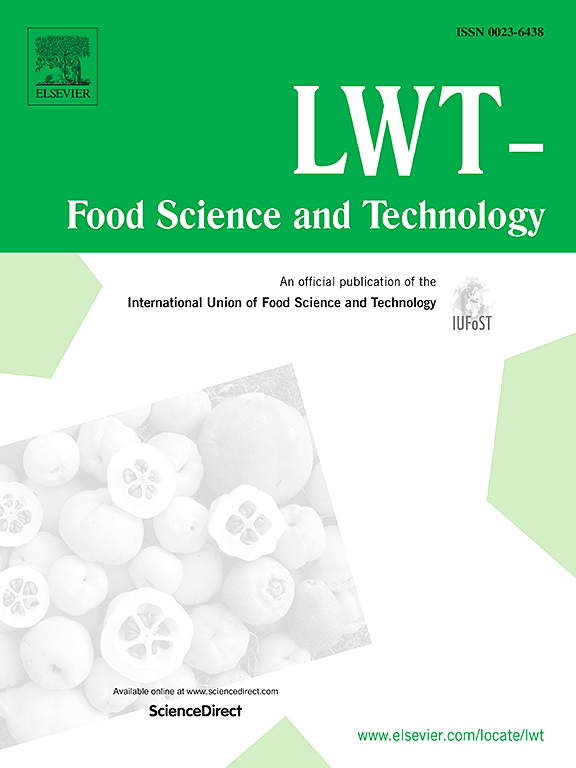Effect of lyophilization on the essential oil content and composition of herbs and spices with different volatile secretory structures
IF 6
1区 农林科学
Q1 FOOD SCIENCE & TECHNOLOGY
引用次数: 0
Abstract
In this study the influence of lyophilization on the volatiles of herbs and spices with different secretory tissues was evaluated and compared with convective drying at 40 °C and 60 °C. Oven drying at 40 °C caused only 4–7 % essential oil (EO) loss for majority of the examined species, while drying at 60 °C reduced volatiles by 26–80 %. However, the original EO composition remained significantly unchanged. Our findings revealed a relationship between the type of volatile secretory structures and the effects of freeze-drying. Lyophilization retained the EO content and composition quite similar to oven drying at 40 °C for half of the studied plant species that accumulated volatiles in external glandular hairs (Melissa officinalis L., Origanum majorana L., Salvia rosmarinus Schleid., Salvia officinalis L.), and for the other half (Mentha x piperita L., Ocimum basilicum L., Satureja hortensis L., Thymus vulgaris L.) also resulted in higher EO content than drying at 60 °C. Whereas, for species that accumulated volatiles in endogenous secretory ducts (Artemisia dracunculus L., Levisticum officinale Koch., Petroselinum crispum var. neapolitanum Danert.), freeze-drying decreased the EO content by 86–97 % and altered the composition substantially. Therefore, lyophilization is unsuitable for preserving such plants if maintaining volatiles is the goal.
冻干对不同挥发性分泌结构的中草药和香料挥发油含量和成分的影响
本研究考察了冻干对具有不同分泌组织的草药和香料挥发物的影响,并与40℃和60℃的对流干燥进行了比较。在40°C的烘箱干燥中,大多数被测物种的精油(EO)损失仅为4 - 7%,而在60°C的烘箱干燥中,挥发物减少了26 - 80%。然而,原始的EO组成基本保持不变。我们的研究结果揭示了挥发性分泌结构的类型与冷冻干燥的影响之间的关系。冻干法保留的EO含量和组成与40°C烘箱干燥法所研究的一半植物(Melissa officinalis L., Origanum majorana L., Salvia rosmarinus Schleid)外腺毛中积累的挥发物相当相似。另外一半(薄荷、basilicum L.、Satureja hortensis L.、thyymus vulgaris L.)的EO含量也高于60°C干燥。然而,对于在内源性分泌管道中积累挥发物的物种(黄花蒿(Artemisia dracunculus L.)、officinale Levisticum Koch.)。(Petroselinum crispum var. neapolitanum Danert.)冷冻干燥后,EO含量降低了86 ~ 97%,组分发生了较大变化。因此,如果以保持挥发物为目的,冻干法不适合保存这类植物。
本文章由计算机程序翻译,如有差异,请以英文原文为准。
求助全文
约1分钟内获得全文
求助全文
来源期刊

LWT - Food Science and Technology
工程技术-食品科技
CiteScore
11.80
自引率
6.70%
发文量
1724
审稿时长
65 days
期刊介绍:
LWT - Food Science and Technology is an international journal that publishes innovative papers in the fields of food chemistry, biochemistry, microbiology, technology and nutrition. The work described should be innovative either in the approach or in the methods used. The significance of the results either for the science community or for the food industry must also be specified. Contributions written in English are welcomed in the form of review articles, short reviews, research papers, and research notes. Papers featuring animal trials and cell cultures are outside the scope of the journal and will not be considered for publication.
 求助内容:
求助内容: 应助结果提醒方式:
应助结果提醒方式:


